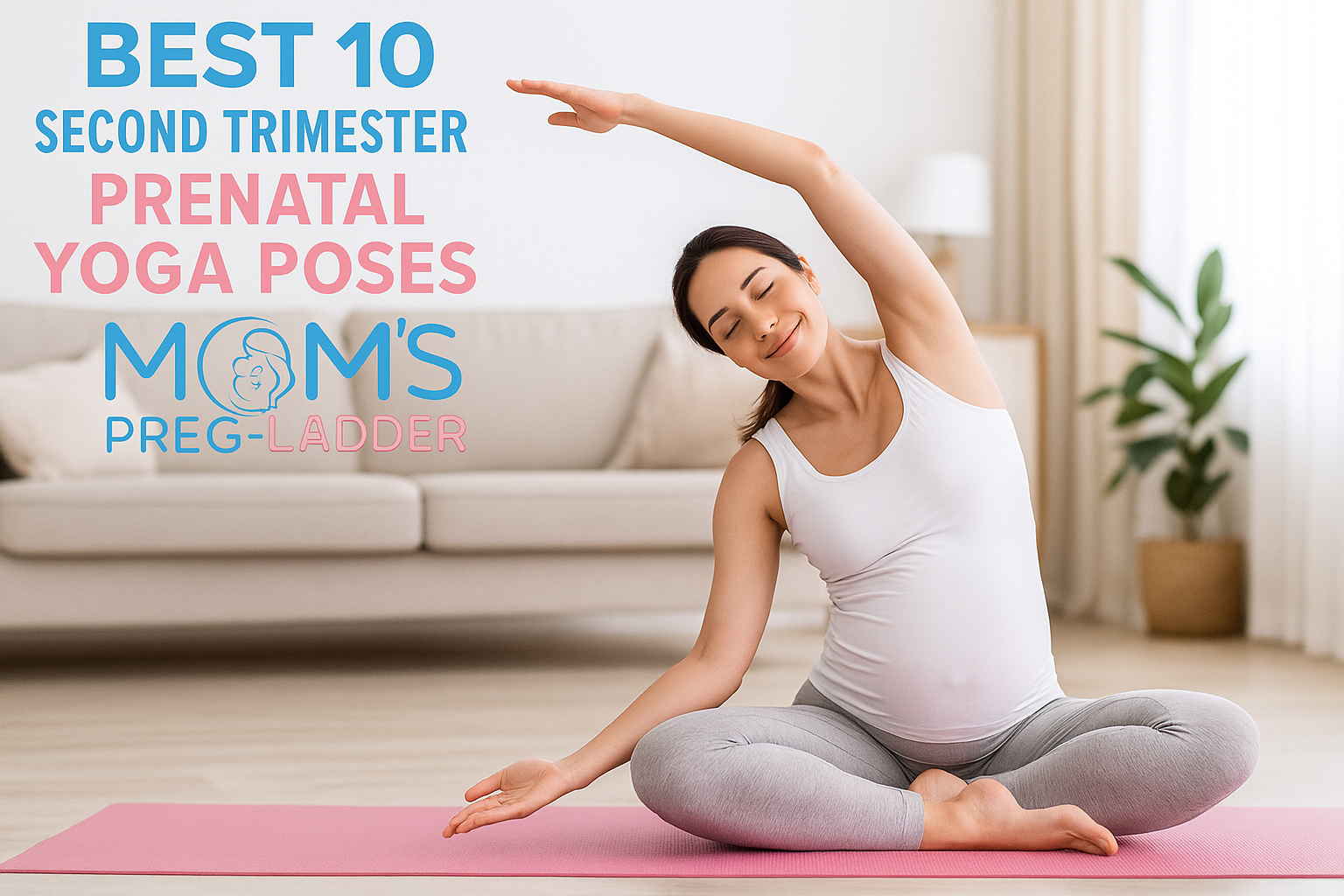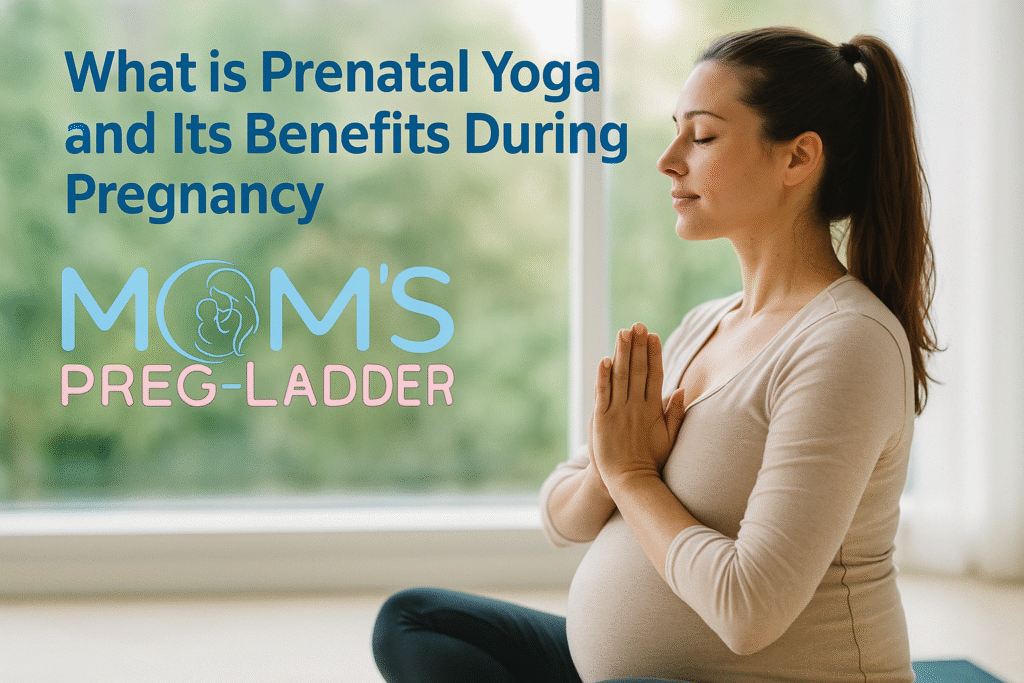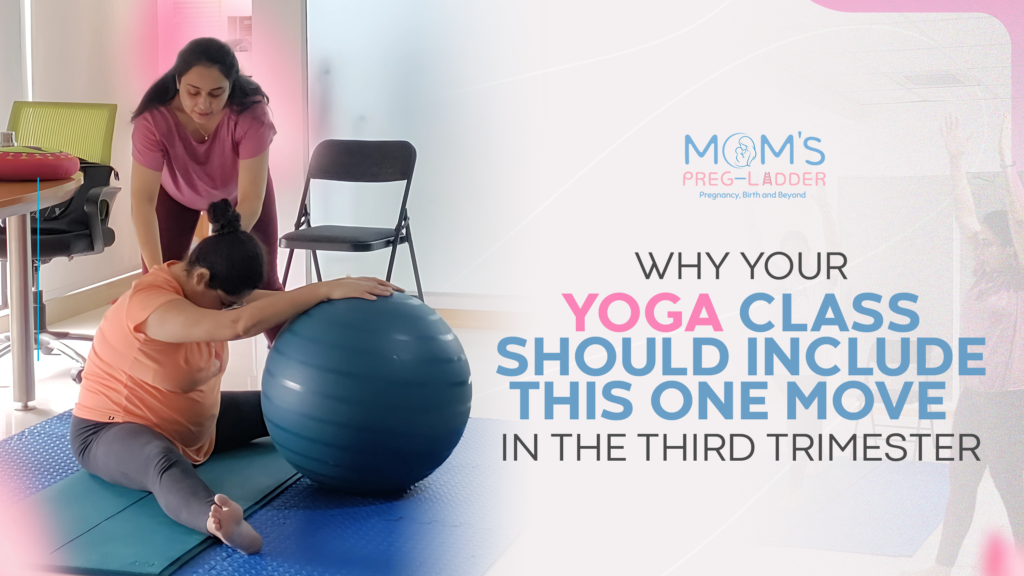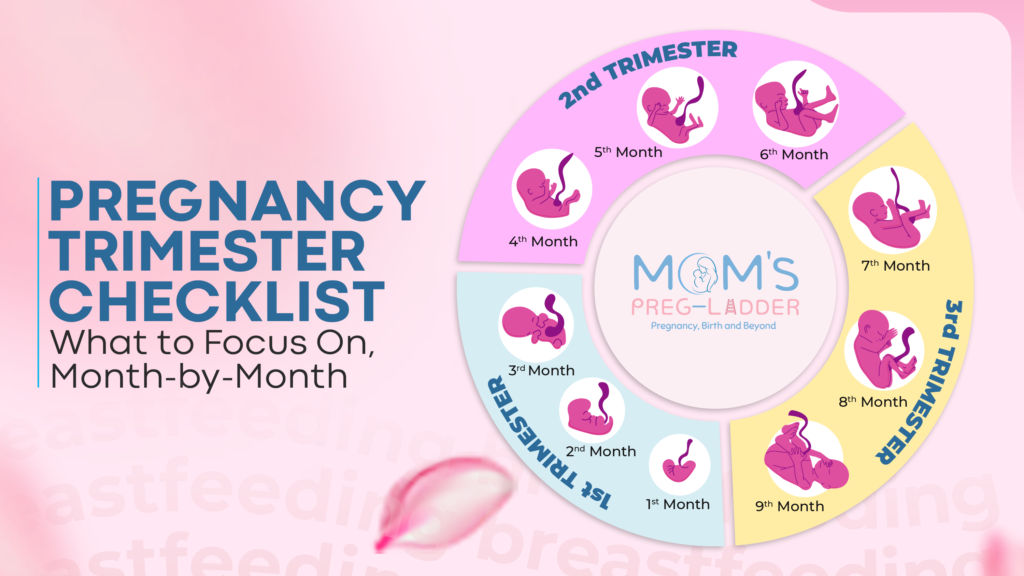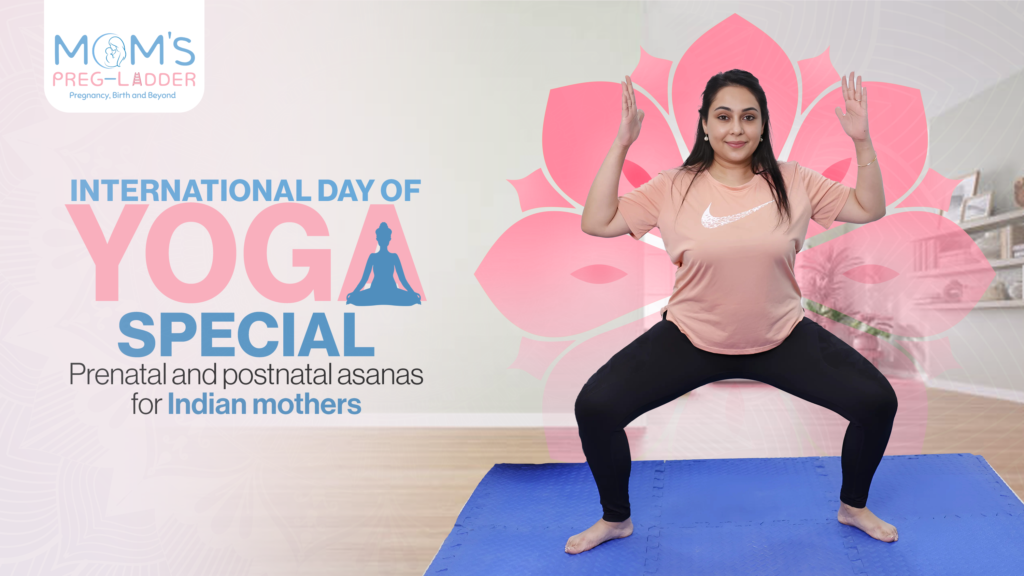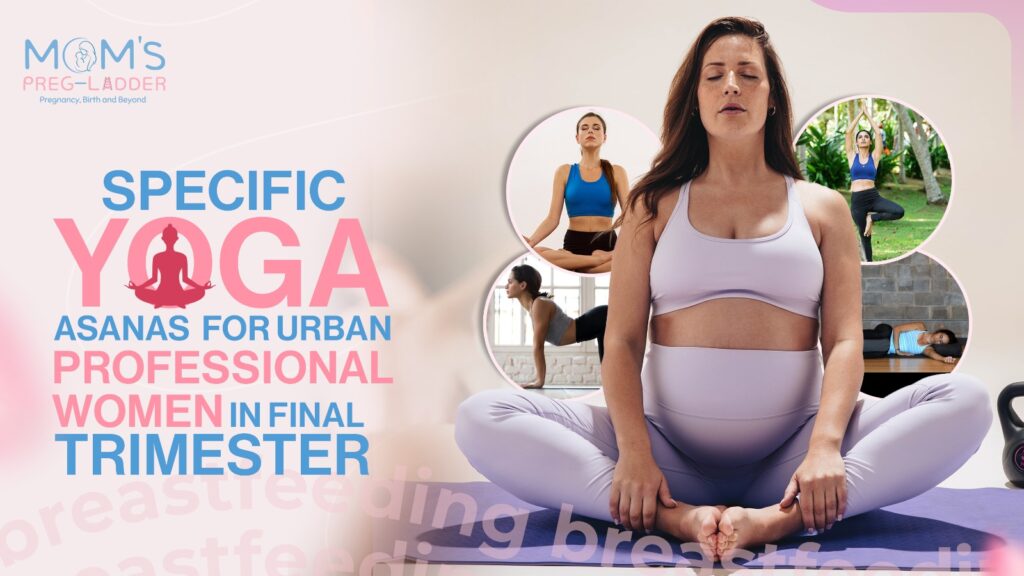Welcome to the second trimester, the period many refer to as the “golden period.” You’re probably starting to see many changes in your body. You may have a little more energy, less nausea, and feel more connected to your baby, all things that make it a great time to kick start or continue a prenatal yoga practice.
Please read this blog to discover why your Yoga Class Should Include This One Move in the Third Trimester for better strength, balance, and comfort.
The practice of prenatal yoga during the second trimester can help support you during this time. Your body is continuing to make incredible changes to support your growing baby. This trimester is weeks 13-27 and is an important time to practice prenatal yoga as your belly is growing and your center of gravity is shifting.
Essential Safety Guidelines Before You Begin
Before we get to the actual poses you can do, I want to reiterate some very basic safety tips that, when practiced, will lead to an enjoyable and safe yoga practice. As a rule of thumb, never do yoga on a full stomach. Wait at least two hours after a large meal to practice.
Drink plenty of water before, during, and after your practice and keep a bottle of water nearby the entire time. Avoid poses that compress the abdomen or have you lying flat on your back for long periods of time (after the first trimester). When the uterus compresses the vena cava (the large vein that returns blood to the heart), it can decrease blood flow to the baby and yourself. Use props (blocks, bolsters, blankets, etc.) to support your body and avoid overexertion. Be extra sensitive to your body during pregnancy.
If a pose does not feel good, is painful, or causes you to become breathless, modify it or omit it entirely. Avoid practicing yoga in hot or heated studios during pregnancy. As mentioned earlier, overheating can be dangerous. And finally, before starting or continuing with an exercise regimen while pregnant, check with your doctor to ensure there are no contraindications. This is especially important if you have any high-risk conditions.
The 10 Best Second Trimester Prenatal Yoga Poses
1. Cat-Cow Pose (Marjaryasana-Bitilasana)
Cat-Cow remains one of the most beneficial poses throughout pregnancy, particularly during the second trimester when spinal flexibility and back comfort become increasingly important. This gentle flowing movement provides immediate relief to your changing spine while creating space for your growing baby.
Begin on your hands and knees in a tabletop position, with your wrists directly under your shoulders and knees under your hips. Ensure your spine is neutral and your neck is in a comfortable position. As you inhale, gently arch your back, lifting your chest and tailbone toward the ceiling while allowing your belly to sink toward the floor (Cow Pose). As you exhale, round your spine toward the ceiling, tucking your chin to your chest and drawing your tailbone under (Cat Pose).
Continue this flowing movement for 5-10 breath cycles, synchronizing your movement with your breathing. This pose offers multiple benefits: it relieves back pain by mobilizing the spine, strengthens abdominal muscles without compression, improves posture, and encourages optimal fetal positioning. The gentle movement also stimulates digestive organs and can help alleviate constipation, a common second trimester complaint.
2. Modified Side Plank (Vasisthasana)
Building core strength during pregnancy helps support your growing belly and prepares your body for labor and postpartum recovery. Modified Side Plank strengthens your obliques, shoulders, and arms while being completely safe for second trimester practice.
Start on your hands and knees, then extend your left leg straight behind you, tucking your toes under. Shift your weight onto your right hand and the outer edge of your right foot, stacking your left foot on top of the right or placing it flat on the floor in front for added stability. Extend your left arm toward the ceiling or rest it on your hip if balance is challenging.
Hold this position for 3-5 breaths, engaging your core muscles without holding your breath. The modification of keeping your bottom knee on the ground provides excellent support while still building strength. This pose strengthens the muscles that support your spine and pelvis, improves balance and body awareness, and prepares your upper body for carrying your baby after birth. Practice equally on both sides to maintain muscular balance.
3. Warrior II (Virabhadrasana II)
Warrior II embodies strength and grace, making it perfect for building the stamina needed for pregnancy and childbirth. This powerful standing pose strengthens your legs and opens your hips while boosting confidence and mental focus.
Stand with your feet wide apart, approximately 3-4 feet. Turn your right foot out 90 degrees and your left foot slightly inward. Extend your arms parallel to the floor at shoulder height, palms facing down. Bend your right knee directly over your ankle, keeping your knee aligned with your second toe. Your left leg remains straight and strong. Gaze over your right fingertips while keeping your torso centered between your legs.
Hold for 5-8 breaths before switching sides. As your pregnancy progresses, you can use a wall for back support or shorten your stance for better stability. Warrior II strengthens your quadriceps, glutes, and ankles, opens your hips in preparation for birth, builds endurance and mental resilience, and improves circulation to your lower body. The wide-legged stance also accommodates your growing belly comfortably.
4. Triangle Pose (Trikonasana)
Triangle Pose provides a beautiful lateral stretch that becomes increasingly valuable as your belly expands and compresses your side body. This accessible standing pose offers numerous benefits while remaining safe and comfortable during the second trimester.
From a wide-legged stance similar to Warrior II, keep both legs straight with your feet positioned as described above. Extend your right arm forward, then lower it to rest on your shin, a block, or a chair—never forcing it to the floor. Extend your left arm toward the ceiling, creating one long line from your bottom hand to your top hand. Keep both sides of your torso equally long, avoiding collapsing into the pose.
Hold for 5-7 breaths before repeating on the other side. Using props generously ensures you maintain proper alignment without strain. Triangle Pose stretches your hamstrings, hips, and spine, relieves backache and sciatica, improves digestion and reduces bloating, and strengthens your legs and core. The pose also creates space in your ribcage for easier breathing.
5. Goddess Pose (Utkata Konasana)
Goddess Pose celebrates the divine feminine energy of pregnancy while providing a powerful hip-opening and strengthening exercise. This wide-legged squat is particularly beneficial for preparing your pelvis for childbirth.
Stand with your feet wide apart, toes turned out at approximately 45-degree angles. As you inhale, extend your arms overhead or out to the sides at shoulder height with bent elbows (like a cactus shape). As you exhale, bend your knees and lower into a squat, keeping your knees aligned over your ankles. Ensure your knees track in the same direction as your toes, and keep your spine long and upright.
Hold this position for 5-10 breaths, or gently pulse up and down to build more strength. You can also hold onto a wall or sturdy furniture for balance. Goddess Pose strengthens your thighs, glutes, and pelvic floor, opens your hips and groin, improves circulation to your pelvic region, and builds the strength needed for squatting during labor. This empowering pose also helps you connect with your inner strength.
6. Supported Bridge Pose (Setu Bandhasana)
Bridge Pose, when properly modified with support, offers gentle strengthening and opening without requiring you to lie flat on your back for extended periods. This pose becomes increasingly beneficial as your pregnancy progresses.
Lie on your back with your knees bent and feet hip-width apart, flat on the floor. Place your arms by your sides, palms down. Press into your feet and lift your hips toward the ceiling, creating a diagonal line from your shoulders to your knees. Immediately slide a yoga block or firm cushion under your sacrum (the flat bone at the base of your spine) for support.
Rest in this supported position for 5-10 breaths, keeping the prop under your sacrum to prevent any compression of the vena cava. Remove the block and slowly lower down, one vertebra at a time. Supported Bridge Pose strengthens your glutes, hamstrings, and back muscles, gently opens your chest and shoulders, relieves tired leg muscles and mild varicose veins, and can help reduce anxiety and fatigue. The support prevents any concerns about lying on your back while still providing the pose’s benefits.
7. Wide-Legged Child’s Pose (Balasana)
Child’s Pose serves as a restful sanctuary during your practice, offering gentle stretching combined with deep relaxation. The wide-legged variation accommodates your growing belly perfectly while providing emotional grounding.
Kneel on your mat with your knees spread wide apart, allowing plenty of space for your belly. Bring your big toes together behind you. Sit back toward your heels (you may not reach them, which is perfectly fine), and extend your arms forward on the floor, resting your forehead on the mat, a folded blanket, or a block.
Remain in this pose for 1-3 minutes, breathing deeply into your back and sides. If your forehead doesn’t comfortably reach the ground, use additional props to bring the support up to you. Wide-Legged Child’s Pose gently stretches your hips, thighs, and lower back, calms your nervous system and reduces stress, relieves pressure on your lower back, and encourages introspection and connection with your baby. This pose can be returned to any time you need rest during your practice.
8. Seated Side Stretch (Parsva Sukhasana)
Lateral stretches become increasingly important during the second trimester as your growing uterus puts pressure on your internal organs and compresses your side body. This seated variation provides relief while being completely safe and accessible.
Sit in a comfortable cross-legged position on your mat, using a folded blanket or cushion under your hips if needed to elevate them above your knees. Place your right hand on the floor beside you for support. Inhale and extend your left arm overhead, then exhale as you gently lean to the right, creating a crescent moon shape with your body.
Keep both sitting bones firmly grounded and avoid collapsing forward. Hold for 5-8 breaths, feeling the stretch along your entire left side. Return to center and repeat on the other side. Seated Side Stretch creates space between your ribs for easier breathing, stretches the muscles between your ribs (intercostals), relieves side body discomfort from your expanding uterus, and improves posture by counteracting forward-leaning tendencies. This pose can be practiced multiple times throughout the day for relief.
Please read this blog to discover the top things you’ll learn in online early pregnancy classes and how they can help you prepare for a healthy journey.
9. Legs Up the Wall (Viparita Karani)
This restorative inversion provides profound relief for tired, swollen legs while being completely safe during the second trimester. It’s technically a mild inversion, but the gentle nature makes it beneficial rather than risky.
Sit sideways next to a wall, with your right or left hip touching it. Swing your legs up the wall as you lower your upper body to the floor, adjusting so your sitting bones are close to (or slightly away from) the wall. Your body should form an L-shape. Rest your arms by your sides, palms up, or place your hands on your belly.
Remain in this position for 5-15 minutes, using a folded blanket under your hips or head if needed for comfort. To come out, bend your knees and roll onto your side before slowly sitting up. Legs Up the Wall reduces swelling in ankles and feet, relieves leg fatigue and mild varicose veins, calms the nervous system and reduces anxiety, and improves circulation throughout your body. This pose is particularly wonderful to practice in the evening after a day of being on your feet.
10. Bound Angle Pose (Baddha Konasana)
Bound Angle Pose serves as an excellent hip opener that directly prepares your pelvis for childbirth while being gentle enough for regular practice throughout the second trimester and beyond.
Sit on your mat with your spine long and tall. Bring the soles of your feet together, allowing your knees to fall open to the sides. Hold your ankles or feet gently. If your knees are significantly higher than your hips, sit on folded blankets or a cushion to elevate your pelvis. You can also place blocks or cushions under your knees for support.
Sit upright for several breaths, then you can gently lean forward from your hips (not your waist) if comfortable, maintaining length in your spine. Hold for 1-3 minutes, breathing deeply. Bound Angle Pose opens your hips and groin, stretches your inner thighs, improves flexibility in your pelvic region, and encourages optimal fetal positioning. Many women find this pose comfortable enough to practice while watching television or reading, making it easy to incorporate into daily life.
How to Structure Your Second Trimester Yoga Practice
Your main practice should include a combination of standing poses, hip openers, and gentle strengthening exercises. A well-rounded 30-45 minute sequence might include:
Sample Practice Flow:
- Cat-Cow Pose (2-3 minutes)
- Downward-Facing Dog with bent knees (5 breaths)
- Warrior II (5 breaths each side)
- Triangle Pose (5 breaths each side)
- Wide-Legged Child’s Pose (1 minute rest)
- Goddess Pose (10 breaths)
- Seated Side Stretch (5 breaths each side)
- Bound Angle Pose (2 minutes)
- Supported Bridge Pose (10 breaths)
- Legs Up the Wall (5-10 minutes)
- Final relaxation in a side-lying position (5 minutes)
Always end your practice with at least 5-10 minutes of relaxation in a comfortable side-lying position (preferably your left side to optimize blood flow). Use pillows between your knees, under your belly, and under your head for maximum comfort. This final relaxation integrates the benefits of your practice and provides essential rest.
Props That Enhance Your Practice
Using props during prenatal yoga isn’t a sign of weakness, it’s a smart way to adapt your practice safely for your changing body. Props offer comfort, stability, and confidence as you move through each pose.
Essential props for your second-trimester yoga practice include:
- Yoga Blocks:
- Bring the floor closer to you in standing poses.
- Provide extra support in seated positions.
- Having two blocks allows maximum flexibility and variation in your practice.
- Bring the floor closer to you in standing poses.
- Bolsters or Firm Pillows:
- Offer crucial support for restorative poses.
- Can be placed under your side body when lying down for better comfort.
- Offer crucial support for restorative poses.
- Yoga Strap:
- Helps you reach your feet in seated forward bends.
- Prevents strain and encourages gentle stretching.
- Helps you reach your feet in seated forward bends.
- Folded Blankets:
- Elevate your hips in seated poses for better alignment.
- Cushion your knees during floor poses.
- Keep you warm and comfortable during final relaxation (Savasana).
- Elevate your hips in seated poses for better alignment.
- Yoga Wedge or Small Foam Cushion:
- Place under your heels in squatting poses to improve stability and comfort.
- Place under your heels in squatting poses to improve stability and comfort.
- Walls, Chairs, or Furniture:
- Great for balance support and modified standing sequences.
- Encourage proper posture and prevent overexertion.
- Great for balance support and modified standing sequences.
Pro Tip:
Gather your props before starting your session to ensure smooth transitions and full support throughout your practice.
Regular use of props builds confidence, helping you feel stronger, more flexible, and better connected to your body. Yoga teaches you to trust your body’s wisdom and embrace your natural ability to birth and nurture your child.
Building a Sustainable Practice Routine
Consistency matters more than intensity when it comes to prenatal yoga benefits. Rather than practicing intensely once or twice per week, aim for shorter sessions (20-30 minutes) four to five times per week. This frequency provides cumulative benefits without overwhelming your schedule or energy levels.
Key Strategies for Maintaining Regular Practice:
- Schedule your practice at the same time each day to establish a routine
- Prepare your space the night before with props already set out
- Keep practice clothes easily accessible
- Start with just 10-15 minutes if longer sessions feel overwhelming
- Practice at home on days when attending class isn’t feasible
- Connect with other pregnant women through prenatal yoga classes for community support and motivation
- Track your practice in a journal, noting how you feel afterward to reinforce positive associations
- Be flexible with your routine, adapting to changing energy levels and schedules
- Celebrate consistency over perfection—three 15-minute sessions are better than zero
How Moms Preg Ladder Supports Your Prenatal Journey
Pregnancy is a time of great change and excitement, but it can also be overwhelming to try and navigate all the information (and misinformation) out there. Moms Preg Ladder is a one-stop shop for expectant mothers who want reliable, evidence-based guidance on every aspect of pregnancy, from nutrition and exercise to mental health and childbirth preparation.
The platform is designed to give you the information you need to make informed choices about your prenatal care, including detailed guidance on safe exercise for each trimester. But it doesn’t just tell you what to do – it also explains the reasoning behind recommendations, so you can understand why your body is changing and make choices that work best for your unique circumstances and values.
Moms Preg Ladder is also an excellent resource for prenatal fitness and yoga classes. It can help you understand when modifications are necessary, how to listen to your body’s signals, and when it might be helpful to seek out additional support from healthcare providers or specialized instructors. The platform recognizes that no two pregnancies are exactly alike and provides flexible guidance instead of strict rules that might not apply to your situation.
Embracing Your Practice with Confidence
Your second trimester is an ideal time to begin a prenatal yoga practice that nourishes your body, relaxes your mind, and connects you with your baby. These 10 poses create a safe foundation, but follow your own body and intuition first.
Explore each pose with curiosity and self-compassion, honoring your unique pregnancy experience. Resources like Moms Preg Ladder can guide you as you cultivate the strength, flexibility, and confidence you need for pregnancy, birth, and motherhood.
Frequently Asked Questions
1. How often should I practice prenatal yoga during my second trimester?
Practice 3–5 times per week, 20–30 minutes each. Adjust based on energy levels, practicing more some days and resting when needed for optimal benefits.
2. Can I start yoga for the first time during pregnancy?
Yes! The second trimester is ideal for beginners. Start slowly with safe poses and consider prenatal classes. Always inform your instructor you’re pregnant.
3. What should I avoid in my yoga practice during the second trimester?
Avoid lying flat on your back, deep twists, belly pressure, uncomfortable inversions, hot yoga, breath retention, rapid breathing, and any pose causing pain, dizziness, or shortness of breath.
4. Is it normal to feel more flexible during pregnancy?
Yes, relaxing increases flexibility. Avoid overstretching—focus on strength and stability. Use your pre-pregnancy range of motion as your guide.
5. How can I tell if a pose is safe for me?
Safe poses allow comfortable breathing, no belly compression, stable support, no pain, and maintainable form. Consult a prenatal instructor or healthcare provider when unsure.
6. Can yoga help prepare me for labor?
Yes, prenatal yoga strengthens muscles, improves stamina, teaches breathing, increases body awareness, and builds focus and calm, helping you during labor and childbirth.

